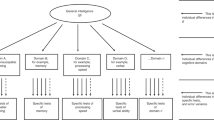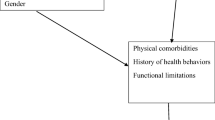Abstract
In Chapter 13 of the Bell Curve, Herrnstein and Murray (H&M) note that “ethnic differences in cognitive ability are neither surprising nor in doubt.”1 This is largely true. What is not so obvious is (1) the causes of such differences, (2) their immutability, and (3) the consequences of ethnic and racial differences in cognitive ability. H&M argue that the causes are largely genetic, that cognitive ability is more or less fixed over an individual’s lifetime, and that it effects a wide array of social consequences, ranging from unemployment to family income, etc. There are, of course, alternative explanations for ethnic and racial differences in cognitive ability and for their consequences. H&M’s favorite statistical tool of multiple regression is not the only way to explore such values. In this chapter we offer an alternative approach focused on health outcomes, and we demonstrate how nongenetic biological, environmental, and social pathways can explain much of the racial and ethnic differences.
Access this chapter
Tax calculation will be finalised at checkout
Purchases are for personal use only
Preview
Unable to display preview. Download preview PDF.
Similar content being viewed by others
References
Herrnstein, R., and Murray, C. (1994), The Bell Curve: Intelligence and Class Structure in American Life, The Free Press, New York.
WHO, (1983), Apartheid and Health, Geneva, World Health Organization.
Williams, D. (1990), “Socioeconomic Differentials in Health: A Review and Redirection,” Social Psychology Quarterly, 53, 81–99.
Williams, D., and Collins, C. (1995), “U.S. Socioeconomic and Racial Differences in Health: Patterns and Explanations,” Annual Review of Sociology, 21,349–386.
Berkman, L., Singer, B., and Manton, K.G. (1989), ¡°Black/White Differences in Health Status and Mortality Among the Elderly,“ Demography, 26, 661–678.
Huntley, J.C., Brock, D.B., Ostfeld, A.M., Taylo, J.O., and Wallace, R.B. (1986), Established Populationsfor Epidemiologic Studies of the Elderly: Resource Data Book, U.S. Government Printing Office (NIH Pub. No. 86–2443), Washington, D.C.
Ware, J.E. (1986), “The Assessment of Health Status,” in L.H.Aiken and D. Mechanic (Eds.), Applications of Social Science to Clinical Medicine and Health Policy, 9th ed., Rutgers University Press, New Brunswick, NJ.
Collins, T.F.B. (1982), “The History of Southern Africa’s First Tuberculosis Epidemic,” South African Medical Journal, 62, 780–788.
Dubos, R J., and Dubos, J. (1953), The White Plague: Tuberculosis, Man, and Society, Victor Gollancz Ltd., London.
Packard, R.M. (1989), White Plague, Black Labor: Tuberculosis and the Political Economy of Health and Disease in South Africa, University of California Press, Berkeley.
City of Capetown, (1979), Annual Report of the Medical Of, Jüer for Health, Capetown, South Africa.
Legassick, M., and deClerq, F. (1978), Capitalism and Migrant Labor in Southern Africa: The Origin and Nature of the System, ILO-ECA Conference on Migrant Labor in Southern Africa, April.
Wilson, F. (1980), “Suggested Directions for the Future,” in SAIRR, Towards Economic and Political Justice in South Africa, South African Institute of Race Relations, Johannesburg.
SAIRR. (1977), Survey of Race Relations, South African Institute of Race Relations, Johannesburg.
Acevedo-Garcia, D. (1996), Has Residential Segregation Shaped the Epidemiology of Tuberculosis among US Minorities? The Case of New Jersey, 1985–1992. Doctoral Dissertation, Princeton University, Princeton, NJ.
Commission on Racial Justice, United Church of Christ. (1987), Toxic Wastes and Race in the United States, Public Data Access, Inc., New York.
Mohai, P., and Bryant, B. (1992), “Environmental Racism: Reviewing the Evidence,” in B. Bryant and P. Mohai (Eds.), Race and the Incidence of Environmental Hazards: A Time for Discourse, Westview Press, Boulder, CO.
Ciesielski, S., Esposito, D., Protiva, J., and Piehl, M. (1994), “The Incidence of Tuberculosis among North Carolina Migrant Farm Workers, 1991,” American journal of Public Health, 84, 1836–1838.
Ryff, C.D., and Singer, B. (1997), The Contours of Positive Human Health,Psychological Inquiry (in press)
Hauser, R.M., Sewell, W.H., Logan, J.A., Hauser, T, Ryff, C., Caspi, A., and McDonald, M. (1992), The Wisconsin Longitudinal Study: Adults as Parents and Children at Age 50, CDE Working Paper 92–2, University of Wisconsin, Center for Demography and Ecology.
Sewell, WH, and Hauser, R.M. (1980), “The Wisconsin Longitudinal Study of Social and Psychological Factors in Aspirations and Achievements,” in A.C. Kerckhoff (Ed.), Research in Sociology and Education, 1, JAI Press, Greenwich, CT, PP. 59–99.
Sewell, W.H., and Shah, V.P. (1967), “Socioeconomic Status, Intelligence, and the Attainment of Higher Education,” Sociology of Education, 40 (Winter), 1–23.
Carr, D., Ryff, C.D., Singer, B., and Magee, W. (1996), Life Histories and Mental Health, Technical Report, Center for Demography and Ecology, University of Wisconsin-Madison.
Adler, N.E., Boyce, T, Chesney, M., Folkman, S., and Syme, L. (1993), “Socioeconomic Inequalities in Health: No Easy Solution,” Journal of American Medical Association, 269, 3140–3145. Adler, N.E., Boyce, T, Chesney, M., Cohen, S., Folk-man, S., Kahn, R.L., and Syme, L. (1994), “Socioeconomic Status and Health: The Challenge of the Gradient,” American Psychologist, 49, 3140–3145.
McEwen, B.S., and Schmeck, H.M., Jr. (1994), The Hostage Brain, Rockefeller University Press, New York.
Lazarus, R.S., and Folkman, S. (1984), Stress, Appraisal, and Coping, Springer-Verlag, New York.
Pearlin, L., and Schooler, C. (1978), “The Structure of Coping,”Journal of Health and Social Behavior, 19, 2–21.
Thoits, P.A. (1994), “Stresses and Problem-Solving: The Individual as a Psychological Activist,” Journal of Health and Social Behavior, 34, 143–159.
House, J., Kessler, R.C., Herzog, A.R., Mero, R.P., Kinney, A.M., and Breslow, MJ. (1992), “Social Stratification, Age, and Health,” in K.W. Schaie,.D. Blazer, and J.S. House (Eds.),Aging, Health Behaviors, and Health Outcomes, Lawrence Erlbaum, Hillsdale, NJ, pp. 1–31.
Weisfeld, G.E. (1980), “Social Dominance and Human Motivation,” in D.R. Omark, F.F. Strayer, and D.G. Freedman (Eds.), Dominance Relations: An Ethological View of Human Conflict and Social Interaction, Garland Press, New York.
Wright, R. (1994), The Moral Animal: The New Science of Evolutionary Psychology, Pantheon Books, New York.
Wethington, E., and Kessler, R.C. (1986), “Perceived Support, Received Support and Adjustment to Stressful Life Events,” Journal of Health and Social Behavior, 24, 208–229.
Wheaton, B. (1985), “Models for the Stress-Buffering Functions of Coping Resources,” Journal of Health and Social Behavior, 26, 352–364.
Newman, K. (1988), Falling from Grace: The Experience of Downward Mobility in the American Middle Class, New York: Basic Books
Geertz, C. (1973) The Interpretation of Cultures, New York: Basic Books.
Ragin, C. (1987), The Comparative Method: Moving Beyond Qualitative and Quantitative Strategies, University of California Press, Berkeley.
Tilly, C. (1984), Big Structures, Large Processes, Huge Comparisons, Russell Sage Foundation, New York.
Ryff, C.D., (1989), “Happiness Is Everything, or Is It?: Explorations on the Meaning of Psychological Well-Being,” Journal of Personality and Social Psychology, 57,1069–1081.
Ryff, C.D., and Keyes, C.L.M. (1995), “The Structure of Psychological Well-Being Revisited,” Journal of Personaliv and Social Psychology, 69, 719–727.
Mathabane, M. (1986), Kaffir Boy, Plume, Penguin Books, New York.
Wadsworth, M.EJ. (1986), “Serious Illness in Childhood and its Association with Later-Life Achievement,” in R.G.Wilkinson (Ed.), Class and Health: Research and Longitudinal Data, Tavistock Publications, London, pp. 50–74.
Weiner, H. (1992), Perturbing the Organism: The Biology of Stressful Experience, University of Chicago Press, Chicago.
Harburg, E., Erfurt, J.C. Hauenstein, L.S., Chape, C., Schull, W.J., and Schork, M.A. (1973), “Socio-ecological Stress, Suppressed Hostility, Skin Color, and Black-White Male Blood Pressure: Detroit,” Psychosomatic Medicine, 35, 276–296.
Copeland, D.D. (1977), “Concepts of Disease and Diagnosis,” Perspectives on Biology and Medicine, 20, 528–538.
Sapolsky, R.M. (1994), Why Zebras Don’t Get Ukers: A Guide to Stress-Related Diseases and Coping, W.H. Freeman, New York.
Maier, S.F. Watkins, L.R., and Fleshner, M. (1994), “Psychoneuroimmunology: The Interface Between Behavior, Brain, and Immunity,” American Psychologist, 49, 1004–1017.
McEwen, B.S., and Stellar, E. (1993), “Stress and the Individual.”ArchivesofInternal Medicine, 153, 2093–2101.
Seeman, T, Singer, B., Horwitz, R.I., and McEwen, B. (1996), Operationalizing Allostatic Load, Manuscript, Andrus Gerontology Center, University of Southern California.
Seeman, T, Charpentier, E, Berkman, L., Tinetti, M., Guralnik, J., Albert, M., Blazer, D., and Rowe, J. (1994), “Predicting Changes in Physical Performance in a High Functioning Elderly Cohort,” MacArthur Studies of Successful Aging, Journal of Gerontology, 49, M97–M108.
McKinnon, W, Weisse, C.S., Reynolds, C.P., Bowles, C.A., and Baum, A. (1989), “Chronic Stress, Leukocyte Sub-populations, and Humoral Response to Latent Viruses,” Health Psychology, 8, 389–402.
Kielcolt-Glaser, J.K., Glaser, R., Gravenstein, S., Malarkey, W.B., and Sheridan, J. (1996), “Chronic Stress Alters the Immune Response to Influenza Virus Vaccine in Older Adults,” Proceedings of the National Academy of Sciences USA, 93, 3043–3047.
Kiecolt-Glaser, J.K., Fisher, L.D., Ogrocki, P., Stout, J.C., Speicher, C.E., and Glaser, R. (1987), “Marital Quality, Marital Disruption, and Immune Function,” Psychosomatic Medicine, 49, 13–25.
Thomas, P.D., Goodwin, J.M., and Goodwin, J.S. (1985), “Effect of Social Support on Stress-Related Changes in Cholesterol Level, Uric Acid Level, and Immune Function in an Elderly Sample,” American Journal of Psychiatry, 142, 735-737.
Cohen, S., and Herbert, T (1996), “Health Psychology: Psychological Factors and Physical Disease from the Perspective of Human Psychoneuroimmunology,” Annual Reviews of Psychology, 47, 113–142.
Neel, J. (1994), Are Genetic Factors Involved in Ethnic Differences in Late-Life Health? Paper presented for Workshop on Racial and Ethnic Differences in Health in Late Life in the US, December 12–13,1994, Committee on Population, National Academy of Sciences, Washington, DC.
Lifton, R.P. (1995), “Genetic Determinants of Human Hypertension,” Proceedings of National Academy of Sciences USA, 92, 8545–8551.
Burke, W. and Motulsky, A.G. (1990), “Hypertension,” in R.A. King, J.I. Rotter, and A.G. Motulsky, (Eds.), The Genetic Basis of Common Diseases, Oxford University Press, New York, pp. 170–191.
Julius, S., and Jammerson, K. (1994), “Sympathetics, Insulin Resistance and Coronary Risk in Hyptertension: The `Chicken and Egg’ Question,” Journal of Hypertension, 12, 495–502.
Lopes, A.A.S., Port, F.K., James, S.A., and Agodoa, L. (1993), “The Excess Risk of Treated End-Stage Renal Disease in Blacks in the United States,” Journal of the American Society of Nephrology, 3, 1961–1971. Lopes, A.A.S., Hornbuckle, K., James, S.A., and Port, F.K. (1994), “The Joint Effects of Race and Age on the Risk of End-Stage Renal Disease Attributed to Hypertension,” American Journal of Kidney Diseases, 24, 1961–1971.
Cavalli-Sforza, L.L., and Cavalli-Sforza, E (1995), The Great Human Diasporas, Addison-Wesley, Reading, MA.
Finch, C.E. (1996), “Biological Bases for Plasticity During Aging of Individual Life Histories,” in D. Magnusson (Ed.), The Lifespan Development oflndividuals: Biological and Psychosocial Perspectives, a Synthesis, Cambridge University Press, Cambridge, pp. 488–512.
Finch, C.E., and Rose, M.R. (1995), “Hormones and the Physiological Architecture of Life-history Evolution,” Quarterly Review of Biology, 70, 1–52.
Editor information
Rights and permissions
Copyright information
© 1997 Springer Science+Business Media New York
About this chapter
Cite this chapter
Singer, B., Ryff, C. (1997). Racial and Ethnic Inequalities in Health: Environmental, Psychosocial, and Physiological Pathways. In: Devlin, B., Fienberg, S.E., Resnick, D.P., Roeder, K. (eds) Intelligence, Genes, and Success. Springer, New York, NY. https://doi.org/10.1007/978-1-4612-0669-9_5
Download citation
DOI: https://doi.org/10.1007/978-1-4612-0669-9_5
Publisher Name: Springer, New York, NY
Print ISBN: 978-0-387-94986-4
Online ISBN: 978-1-4612-0669-9
eBook Packages: Springer Book Archive




